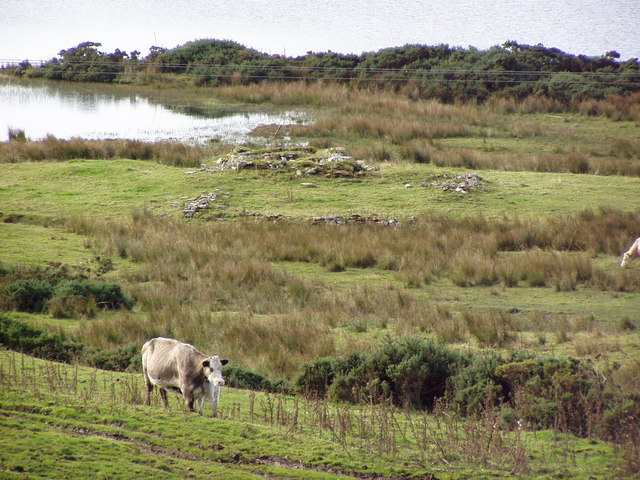Tulach An T'Sionnaich on:
[Wikipedia]
[Google]
[Amazon]
 Tulach an t'Sionnaich ("Mountain of the Fox"), is a
Tulach an t'Sionnaich ("Mountain of the Fox"), is a
Description and site plan
{{Coord, 58.535465, N, 3.598257, W, type:landmark_region:GB-HLD, display=title, format=dms Megalithic monuments in Scotland Archaeological sites in Caithness Culture in Highland (council area) Chambered cairns in Scotland Scheduled monuments in Scotland
 Tulach an t'Sionnaich ("Mountain of the Fox"), is a
Tulach an t'Sionnaich ("Mountain of the Fox"), is a cairn
A cairn is a man-made pile (or stack) of stones raised for a purpose, usually as a marker or as a burial mound. The word ''cairn'' comes from the gd, càrn (plural ).
Cairns have been and are used for a broad variety of purposes. In prehis ...
at the northern end of Loch Calder in Caithness
Caithness ( gd, Gallaibh ; sco, Caitnes; non, Katanes) is a historic county, registration county and lieutenancy area of Scotland.
Caithness has a land boundary with the historic county of Sutherland to the west and is otherwise bounded by ...
, Scotland that has been expanded over time. It was partially excavated in 1961 and 1963. Before the excavations there was just a long and wide cairn with no recognizable structures. The cairn is oriented from northwest to southeast; the southeastern end being higher () and somewhat wider. Subsequently a ditch was cut some from this end of the cairn.
The excavations revealed that the monument was initially a square passage tomb within a round cairn of diameter. Its long passage faced south. The external passage entrance was sealed by the circular stone wall that enclosed the cairn.
The first cairn may have had a D-shaped or heel-shaped platform already, but after probably only a short time, a heel-shaped cairn
The heel-shaped cairn, with its usually cruciform chamber, is a type of megalithic monument that is found in Scotland, especially in Caithness and Sutherland and in the Shetland Islands. In Orkney, the Isbister Cairn is the only site that ...
was built over it; this has been identified as the oldest of its type on the Scottish mainland. Its small size places it typologically into an early period within its monument class. The new façade built over the entrance to the passage tomb was not breached. Disturbances, however, prevented a complete floor plan to be reproduced. The site appears to be about wide and roughly the same length. The northern end is in the area of the ditch, traces of dry stone walling
Dry stone, sometimes called drystack or, in Scotland, drystane, is a building method by which structures are constructed from stones without any mortar to bind them together. Dry stone structures are stable because of their construction me ...
were identified.
After some time the entire structure was covered by a long cairn, surrounded by a low external wall, whose southern end extended beyond the old façade. This long cairn was about long and tapered from its wide pseudo-façade to its wide, gently convex-curved northern end. It lay roughly east of the axis of the heel-shaped cairn, probably in order to make better use of a natural ridge, and to raise the height, which apart from the southern end is nowhere above . Selective cuts into the cairn revealed cist-shaped insets that were components of the cairn structure.
Only a few finds were made, but the pottery clearly showed that the heel-shaped cairn was in use during the phase of the jewel-less Neolithic pottery era. It fell into disuse during the Beaker culture period and the long cairn had already been built before urns were deposited outside the enclosure.
The southwestern side, including the chamber of Tulach an t-Sionnaich, has been eroded by the rise in water level of Loch Calder, but the main part of the cairn has survived and is covered with grass.
See also
*British megalith architecture
British megalith architecture is the study of those ancient cultures that built megalithic sites on the British Isles, including the research and documentation of these sites. The classification sometimes used of these cultures based on geologica ...
Literature
* James L. Davidson, Audrey S. Henshall: ''The chambered cairns of Caithness. An inventory of the structures and their contents''. Edinburgh University Press, Edinburgh, 1991, .External links
Description and site plan
{{Coord, 58.535465, N, 3.598257, W, type:landmark_region:GB-HLD, display=title, format=dms Megalithic monuments in Scotland Archaeological sites in Caithness Culture in Highland (council area) Chambered cairns in Scotland Scheduled monuments in Scotland